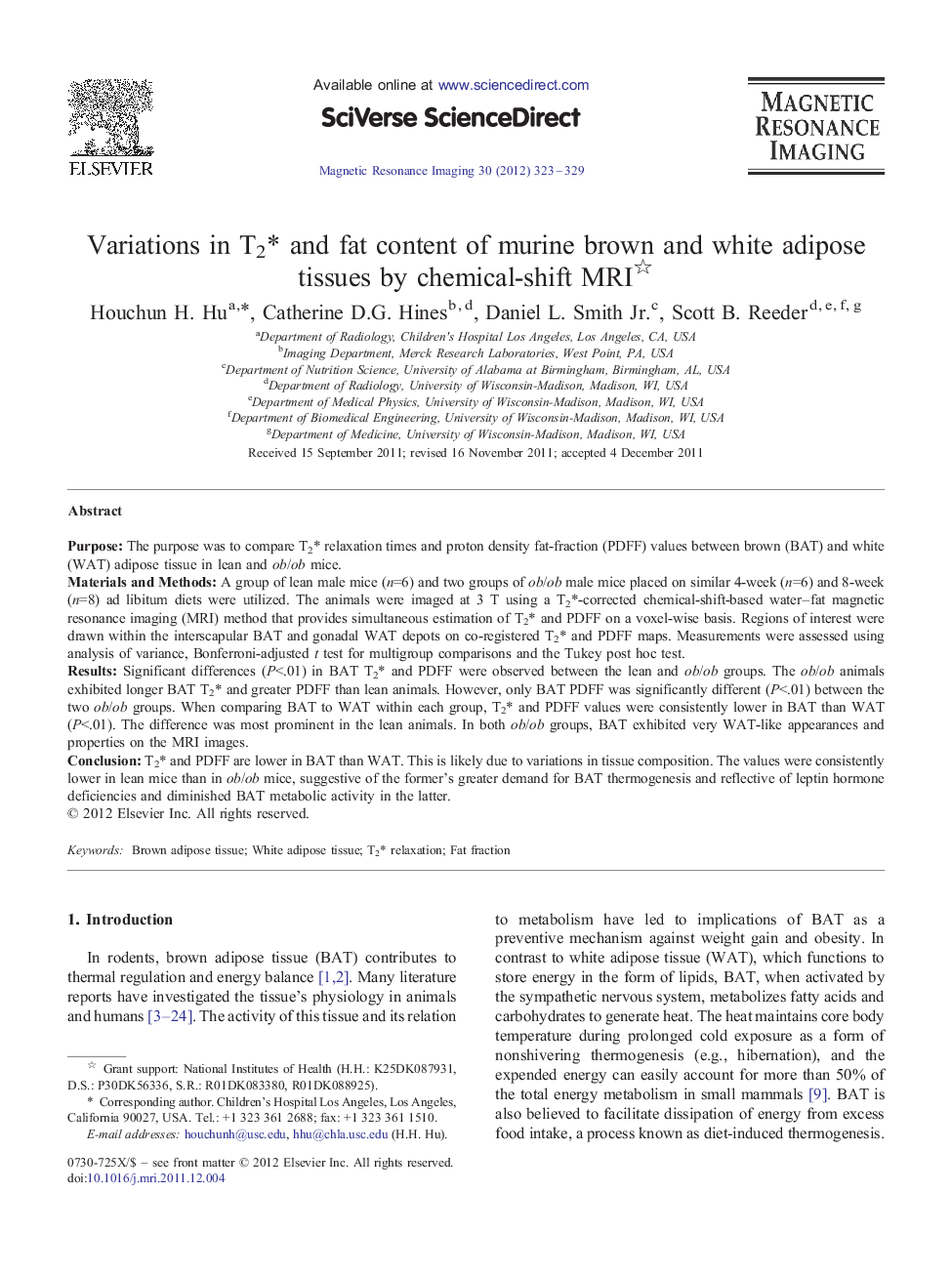| Article ID | Journal | Published Year | Pages | File Type |
|---|---|---|---|---|
| 1806723 | Magnetic Resonance Imaging | 2012 | 7 Pages |
PurposeThe purpose was to compare T2* relaxation times and proton density fat-fraction (PDFF) values between brown (BAT) and white (WAT) adipose tissue in lean and ob/ob mice.Materials and MethodsA group of lean male mice (n=6) and two groups of ob/ob male mice placed on similar 4-week (n=6) and 8-week (n=8) ad libitum diets were utilized. The animals were imaged at 3 T using a T2*-corrected chemical-shift-based water–fat magnetic resonance imaging (MRI) method that provides simultaneous estimation of T2* and PDFF on a voxel-wise basis. Regions of interest were drawn within the interscapular BAT and gonadal WAT depots on co-registered T2* and PDFF maps. Measurements were assessed using analysis of variance, Bonferroni-adjusted t test for multigroup comparisons and the Tukey post hoc test.ResultsSignificant differences (P<.01) in BAT T2* and PDFF were observed between the lean and ob/ob groups. The ob/ob animals exhibited longer BAT T2* and greater PDFF than lean animals. However, only BAT PDFF was significantly different (P<.01) between the two ob/ob groups. When comparing BAT to WAT within each group, T2* and PDFF values were consistently lower in BAT than WAT (P<.01). The difference was most prominent in the lean animals. In both ob/ob groups, BAT exhibited very WAT-like appearances and properties on the MRI images.ConclusionT2* and PDFF are lower in BAT than WAT. This is likely due to variations in tissue composition. The values were consistently lower in lean mice than in ob/ob mice, suggestive of the former's greater demand for BAT thermogenesis and reflective of leptin hormone deficiencies and diminished BAT metabolic activity in the latter.
